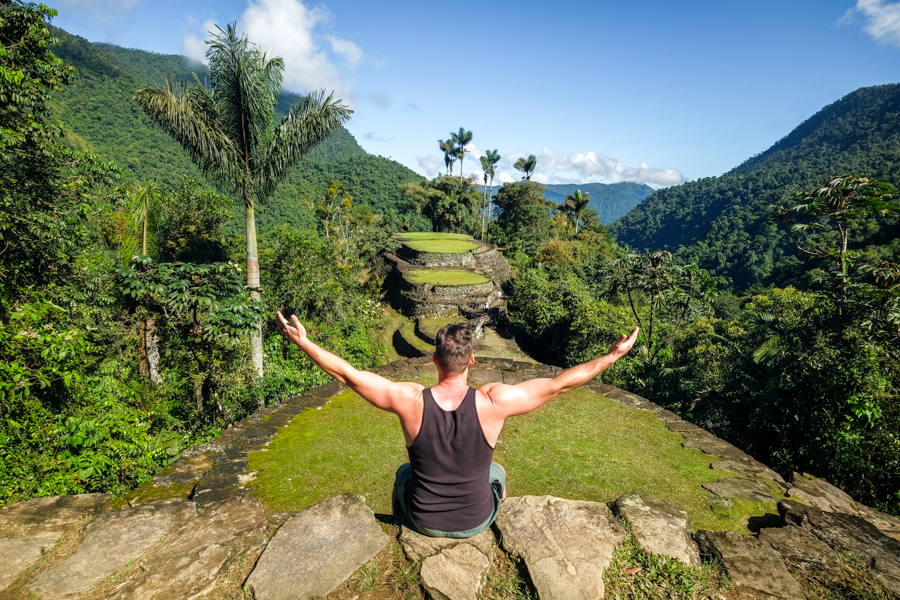The Lost City trek is a bucket list hike in Colombia where you can see the ruins of the Ciudad Perdida, an ancient city built by the Tairona people more than 1,000 years ago.
It’s a guided jungle trek that normally takes 4 days, and includes food and lodging in camps along the route. There’s plenty of challenge, but the local guides are very kind, helpful, and knowledgeable.
I did the Lost City hike recently and it was a great experience. We had a fun group and we went far into the Sierra Nevada mountains, visited indigenous villages, crossed rivers, swam every day, and hiked till our legs hurt.
In this blog post, I’ll explain everything you need to know about the Lost City trek and how to do it!
Quick Facts*
- Distance: 49 kilometers (30 mi)
- Elevation Gain: 2,650 meters (8,700 ft)
- Max Altitude: 1,190 meters (3,900 ft)
- Duration: 3 – 5 days
- Difficulty: Hard
*These stats are for the roundtrip trek
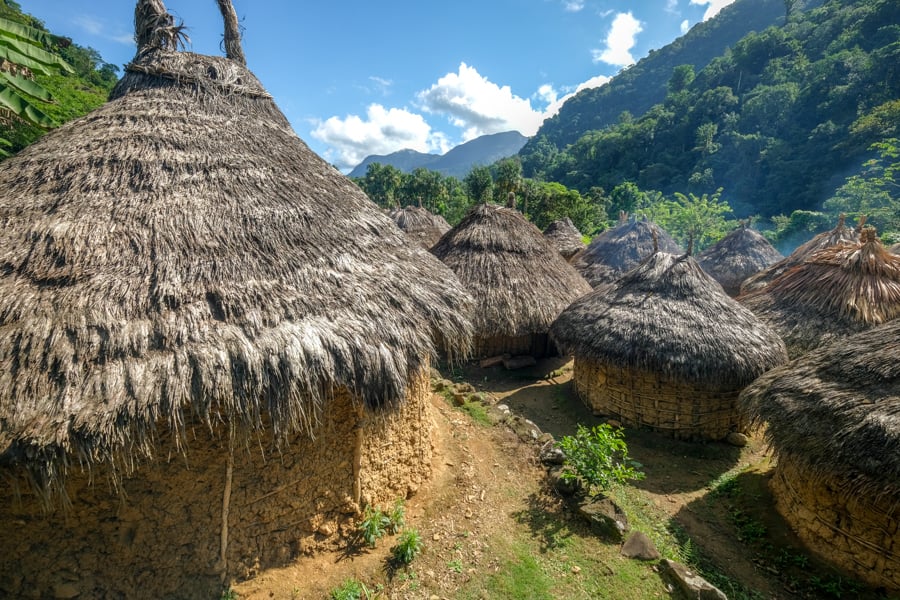
How To Get There
The Lost City is located in the mountains near Santa Marta, in northern Colombia.
There are lots of direct flights every day to Santa Marta from airports like Bogota, Medellin, and Pereira, and the flight time is only about 1.5 hours. You can shop for flights on Skyscanner.
The trekking tours include a van transfer from Santa Marta to the start of the trail, and then back to town afterwards, so you won’t need to worry about transportation.
If you’re looking for a place to stay in Santa Marta the night before or after your hike, I’d recommend Hotel Boutique Casa Chunuu.
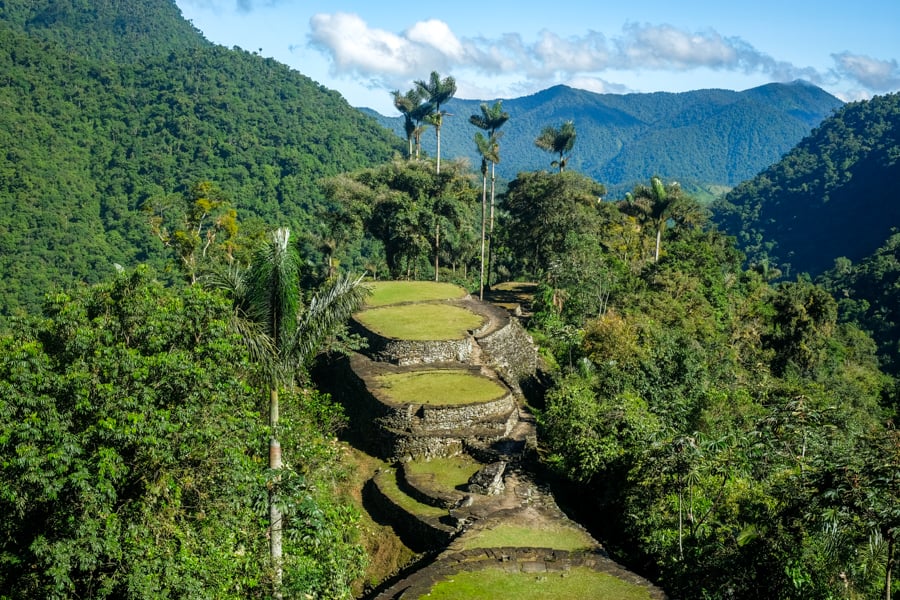
Lost City Trek: What To Expect
The Lost City is an all-inclusive, fully guided trek that includes lodging in camps with beds and mosquito nets, plus 3 meals a day and more.
It’s an out-and-back trek with about 4-7 hours of hiking per day, and it can be done in 3, 4, 5, or even 6 days. Most people do it in 4 days, and I think that’s the perfect length of time for the average person.
If you’re a very fit hiker who’s limited on time in Colombia, then the 3 day option may work for you. Otherwise, if you want to slow down and spend more time in the mountains, then 5 or 6 days may be right.
However, for most people I’d recommend 4 days. It gives you enough time to experience the main sights without feeling too rushed, and it’s not too difficult for most hikers.
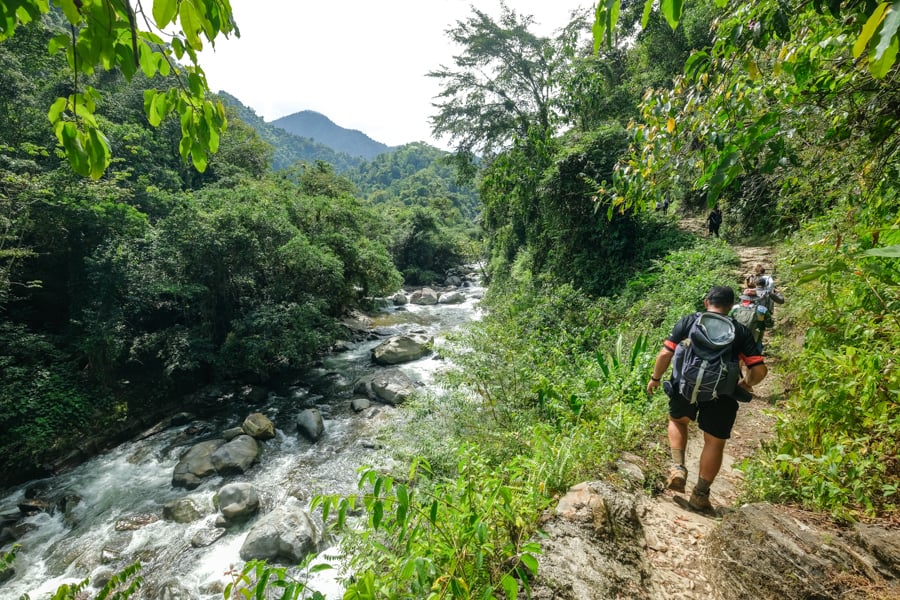
In general, you’ll be waking up at 5 AM every day of the trek, and winding down activity at around 3-5 PM when you reach the camps.
That sounds like an awful lot, but don’t worry; there will be plenty of breaks mixed in so you can eat, swim, and rest. It’s not all hiking.
There are river crossings on each day of the hike, but these all have bridges now, which is great. You won’t have to worry about wading through the rivers like in the old days. Some travel guides on the internet were written before this changed.
In the next few sections, I’ll share my own experience on each day of the Lost City trek and what you can expect in terms of sights, activities, camps, and challenges.
Day 1: Start Of The Trek
My trek began with a 7 AM pickup from my hotel in Santa Marta. I was joined by my cousin and his wife, and we were first brought to the tour company’s office in Santa Marta, where we had a snack and met the rest of our group.
There were exactly a dozen people in our group — 10 hikers and 2 guides. Most of the hikers were from the Netherlands, plus a German couple and a few Americans (us).
We were all herded into the back of a van together, and then drove 1 hour on the highway until we got to the main entrance, where we stopped for a 15 minute break to stretch and pee.
Next, we drove 1 hour on a mountain road to the town of Machete. This part of the journey was super uncomfortable because of the cramped leg room, side facing seats, and bumpy road conditions.
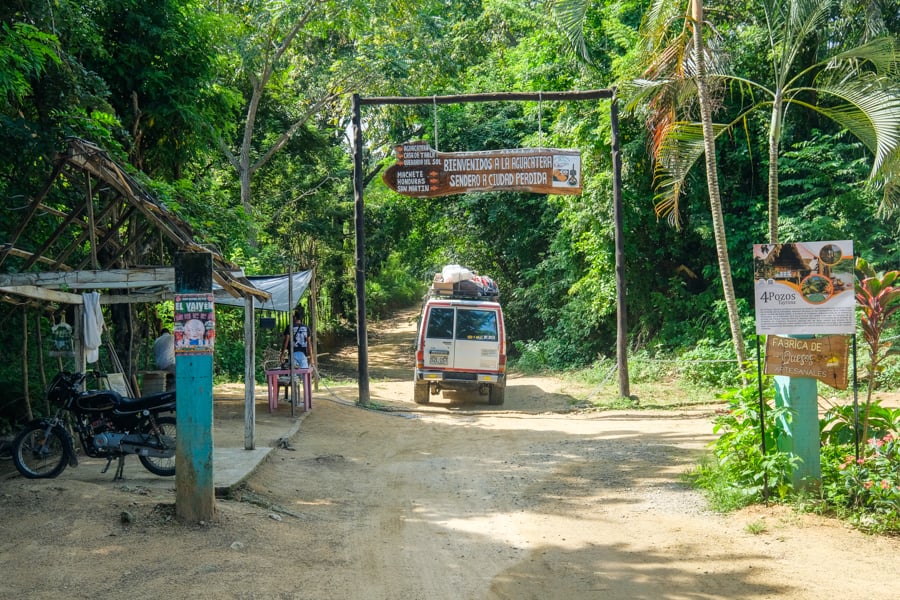

We stopped for lunch at a restaurant in Machete, which is the main starting point for the trek, and met our Colombian guides, who gave us a briefing on the hike and what to expect.
Then it was time to start hiking! For the first day, a good chunk of it was uphill, although it was partly paved and we only had to hike about 9 kilometers (~6 miles) in total.
It wouldn’t have been too hard, except we ran into some heavy rain that turned the path into pure mud and sludge, causing us to slip around for the rest of the afternoon as we descended the other side of the hill.
Finally we reached Camp Alfredo, where we ate supper and stayed the first night.
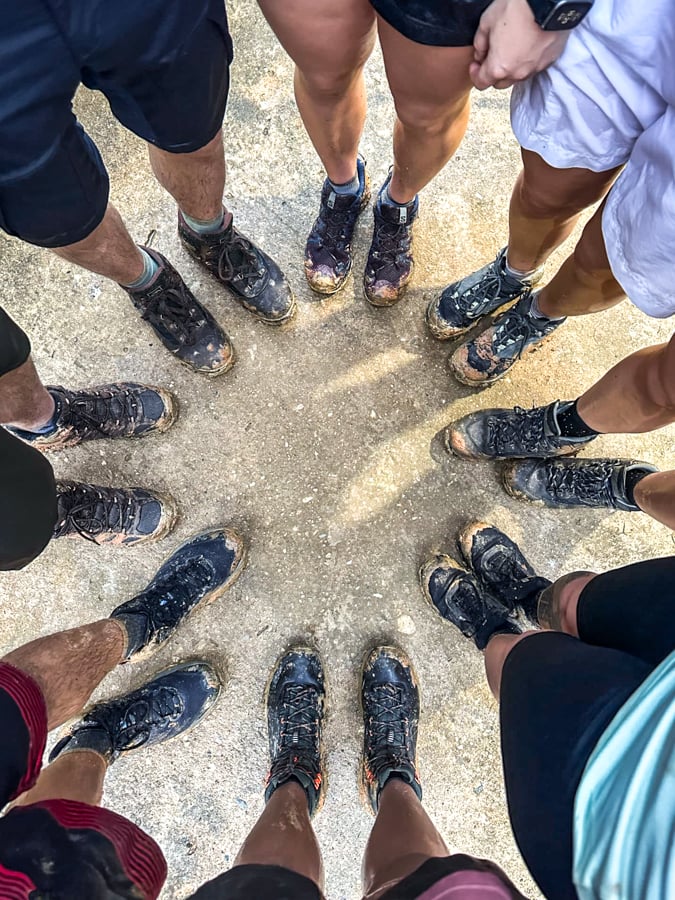
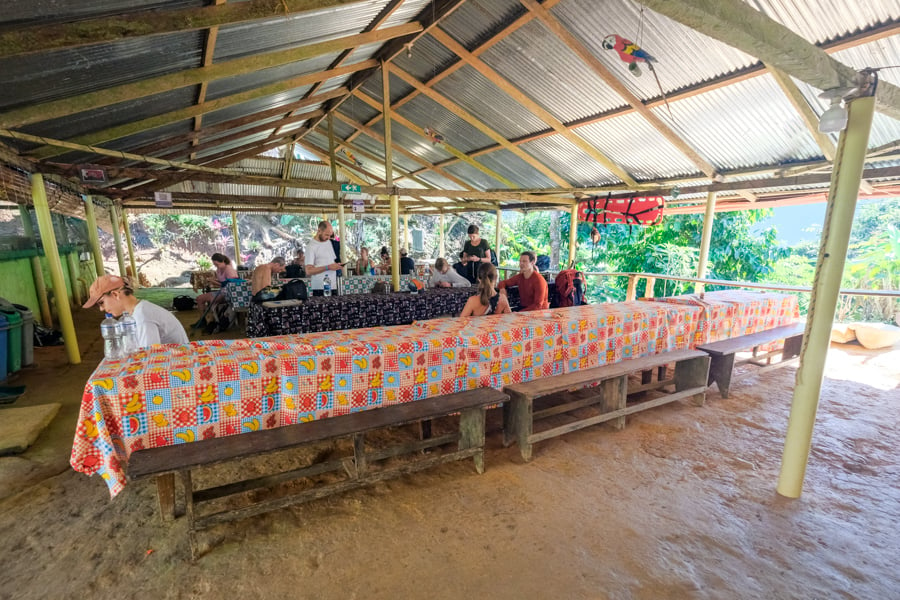
Day 2: Villages & Culture
The second day was one of the longest and hardest parts of the trek, but we had much better luck with the weather compared to the first day.
This time, we woke up at 5 AM for breakfast and hiked all the way from Camp Alfredo to Camp Paraiso, which took us deeper into the jungle by another 14 kilometers (~8 miles).
There were lots of steep hills and it was a killer workout. Along the way, we got to see the traditional thatch hut village of Mutanyi, belonging to the Kogi indigenous people.

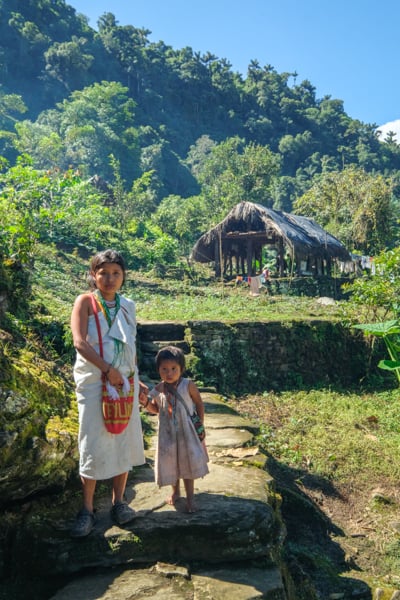
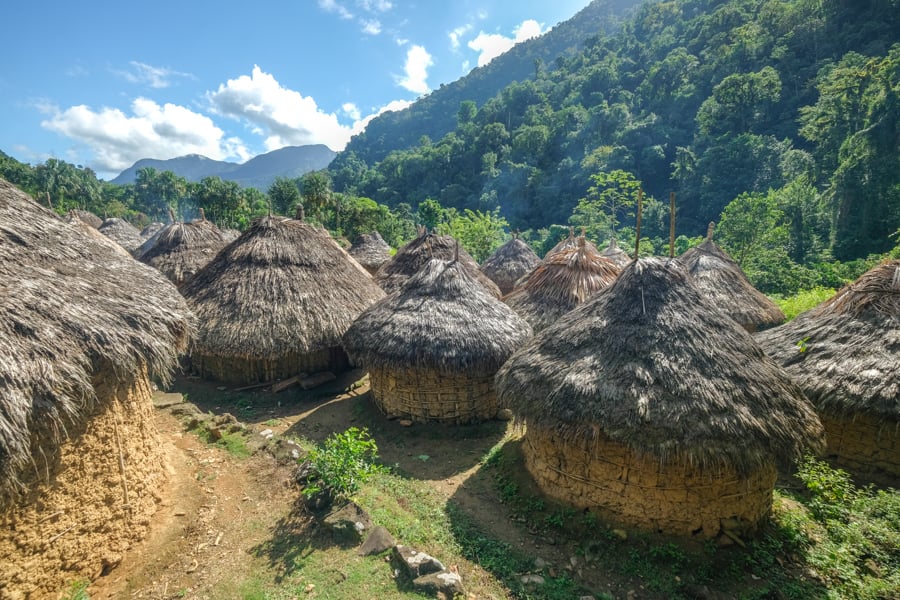
We also stopped for lunch at Camp Mumake and swam in the river, which was a very relaxing break from hiking. The water was surprisingly cold and that’s just what we needed.
The rest of the day was mostly spent hiking near the river, and this time, the rain held off until we reached Camp Paraiso.
The rain didn’t start up again until after we went to bed, and then it was just a nice background noise as we fell asleep. Perfect!
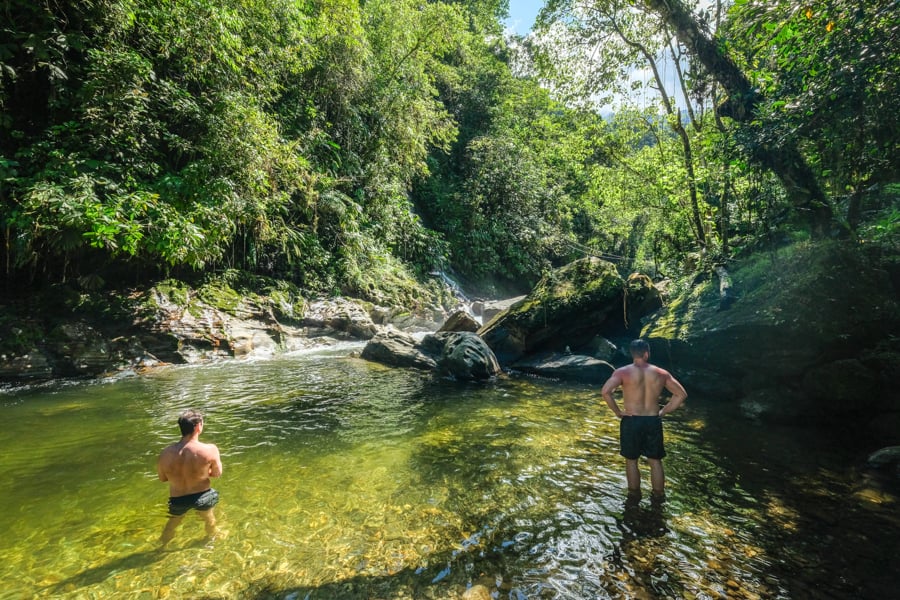
Day 3: Exploring The Lost City
On the third day, it was time to go see the Lost City!
To reach it, you have to climb approximately 1,200 stone steps. They’re steep, oddly-shaped, wobbly, and slippery, especially when they’re wet from the early morning dew, so be very careful.
This would be an easy place to hurt yourself.
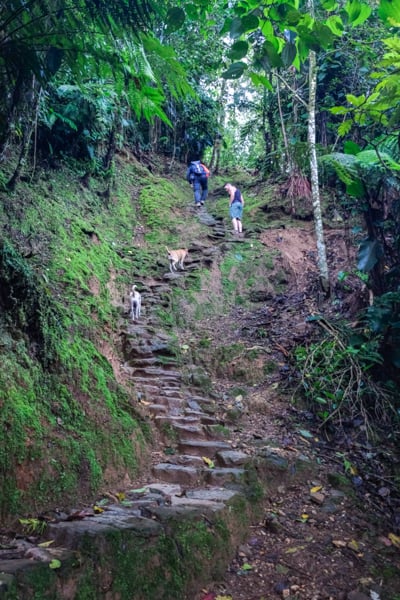
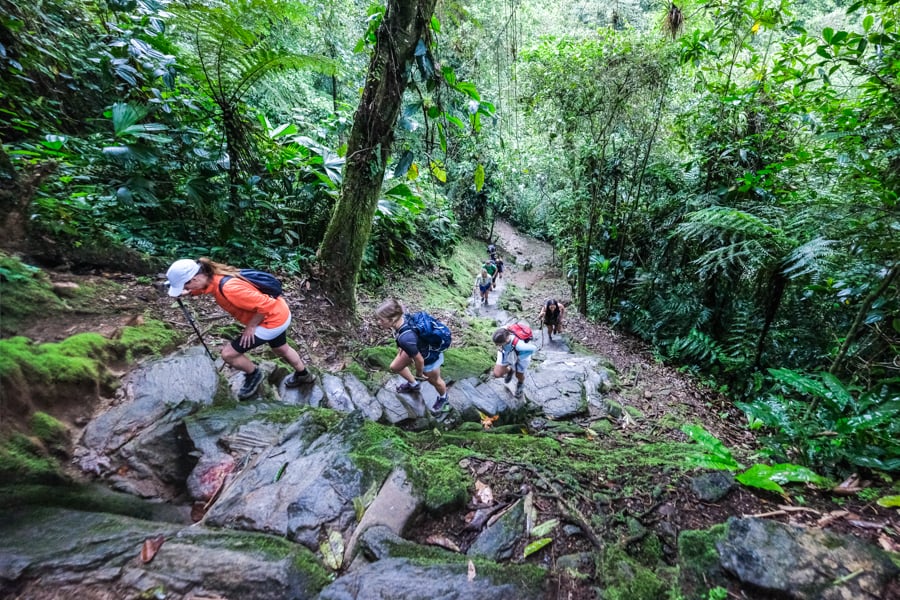
The Lost City is interesting, and it’s a lot bigger than I expected. At one time, it was home to thousands of people!
It was built by the Tairona people in 800 AD, so it’s even older than Machu Picchu in Peru.
The city was abandoned in the 16th century and then rediscovered by local treasure looters in 1972, hence the name ‘Ciudad Perdida,’ which means the Lost City.
We spent hours exploring the main ruins and terraces, so we were surprised when our guide told us that there are even more ruins that aren’t open to the public!
What we see as tourists is only a fraction of the Lost City, but it’s still impressive.
The best view can be found at the top of the city, looking down on the terraces and the mountains in all directions.
After a thorough tour with lots of explanations from our guide and plenty of time to take photos, it was time to start hiking back.
We went down to Camp Paraiso and grabbed lunch, swam in the river a little more, and then hiked all the way back to Camp Mumake, where we stayed the last night of the trek.
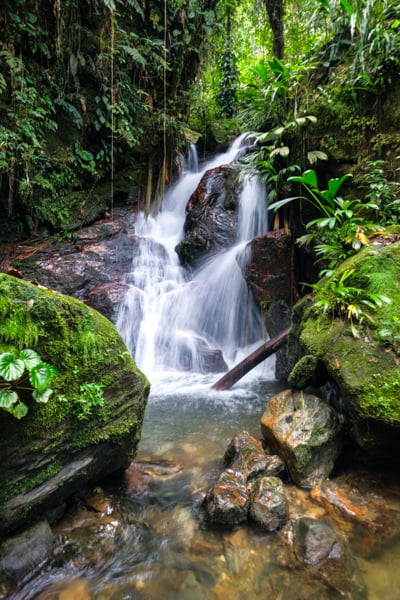
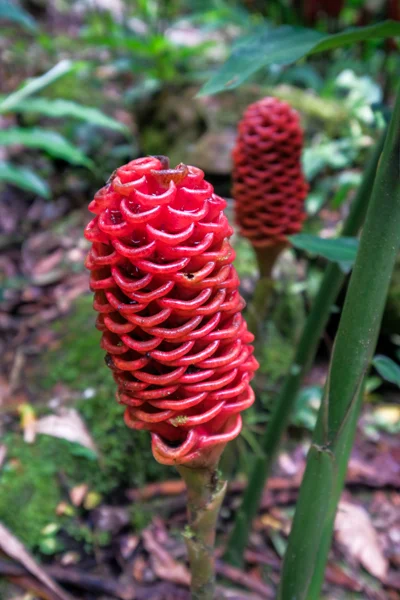
Day 4: The Return Journey
The last day of the trek was another whopper. We woke up at 5 AM again, and hiked about 16 kilometers (~10 miles) back to the start.
On the way back, the sky was clear and we got some wonderful views of the Sierra Nevada mountains, which we had missed on the first day because of the rain. Bright green mountains!
We had our last lunch as a group together in Machete town, and then headed back to Santa Marta to get cleaned up and go our separate ways.
All in all, the Lost City was a great hike and everyone in our group enjoyed it immensely.
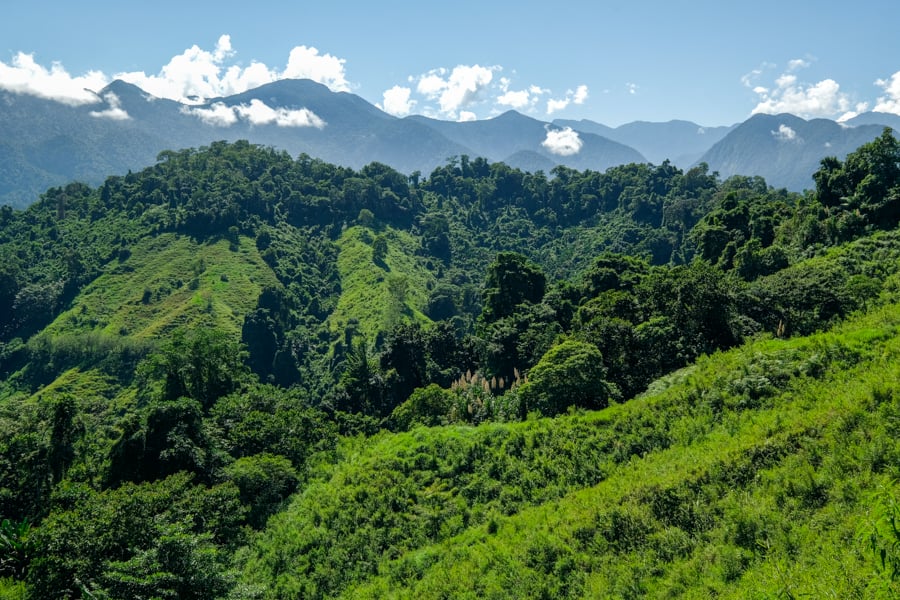
How Hard Is It?
The Lost City is a hard hike. It’s definitely harder than I expected.
You’ll be walking up and down steep hills every day with rocky and muddy terrain, plus the crazy humidity. Your sleep quality won’t be the greatest either, thanks to the early wakeup times every morning.
All of this is compounded by the 4-day length of the hike. We were fresh on the first day or two of the hike, but by the end we were exhausted and beat up.
That doesn’t mean the trek is unmanageable, or that you need to be super fit to do it. The guides are very patient waiting for stragglers, and there are plenty of rest stops and snack breaks along the way.
So yes, you can do the trek. Don’t worry. Just expect plenty of challenge!
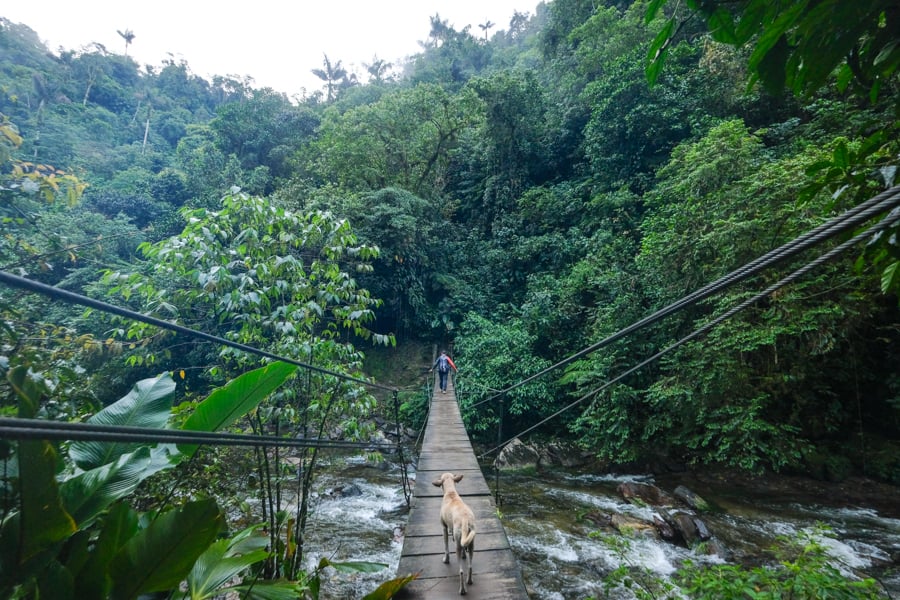
What Are The Camps Like?
I’m happy to say the camps on this trek are fairly comfortable, although you can’t expect luxury.
There are showers and flush toilets, and the bunk beds have nets to keep you safe from mosquitoes at night.
All of the camps have charging stations and WiFi, although you may need to pay a small cash fee to use them.
Electricity is turned off at around 9 PM every night, so take care of your charging and necessities before then.
Each camp also has a little shop where you can buy snacks, drinks, and toiletries. They had a surprising assortment of goodies for sale: shampoo, tooth paste, toilet paper, tampons, cigarettes, beer, Gatorade, batteries, and more.
It actually had me wishing I’d packed less stuff!
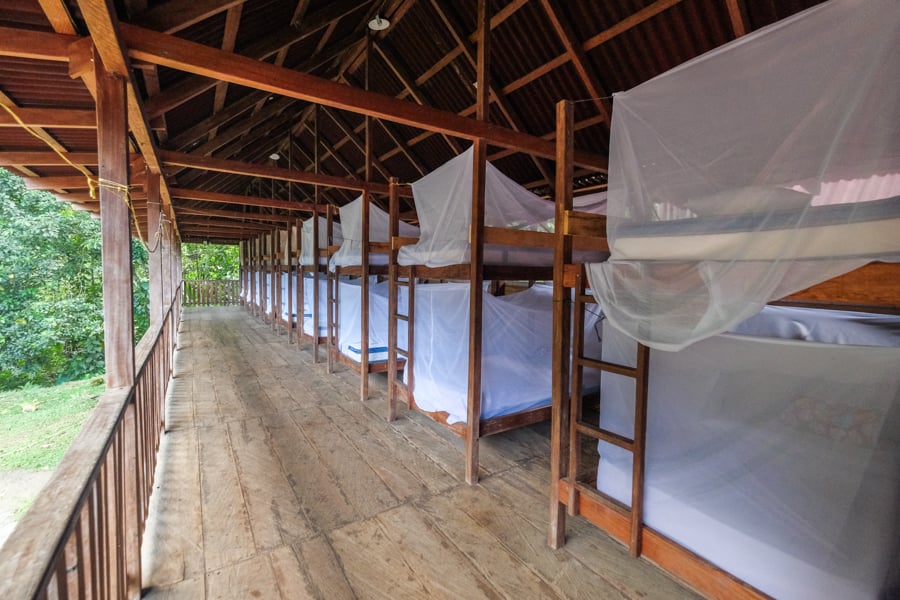
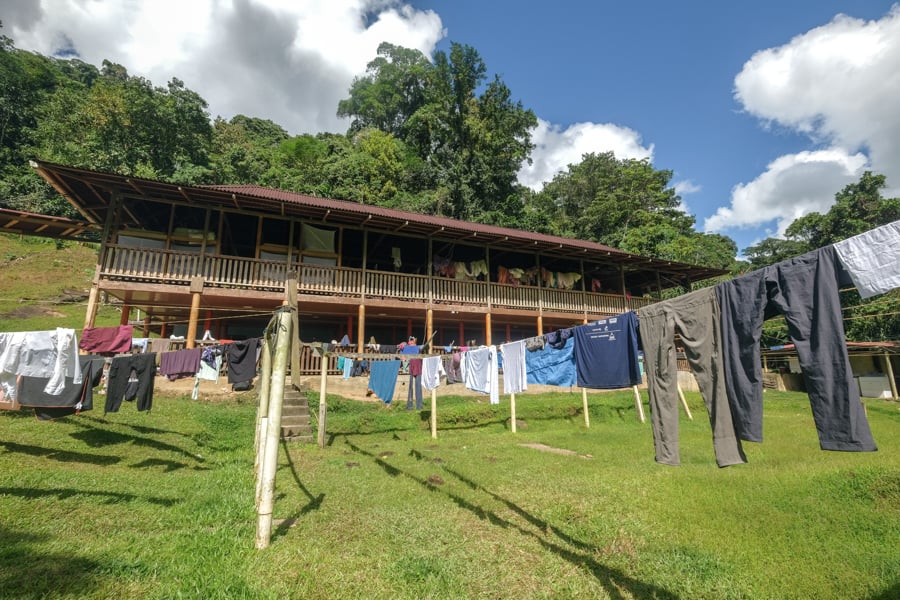
Is It Safe?
While some places in Colombia are definitely sketchy in terms of crime, the Lost City has had a good safety record for many years now.
Long story short, it’s generally a safe hike and the main risk is twisting an ankle or something of that sort.

